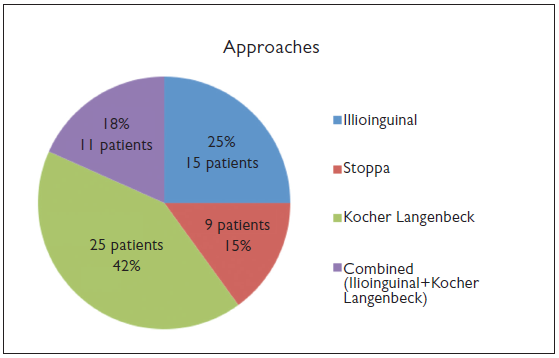Objective: In this study we aimed to evaluate the outcomes of anterior and combined approaches for treatment of acetabular fractures.
Materials and Methods: Thirty-seven acetabular fractures in 35 patients treated with an anterior approach were evaluated retrospectively. Fractures were classified according to Judet-Letournel. Early and final radiological evaluation was based on Matta’s criteria. Modified Merle d'Aubigne and Postel criteria were used for functional assessment.
Results: Eleven (30%) fractures were simple type and 26 (70%) were mixed type. Two (18%) of the simple fractures were transverse and 9(82%) were anterior column fractures. Fourteen (54%) of the mixed type fractures were both column fractures, 5 (19%) were transverse+posterior wall, 5 (19%) were T shaped and 2 (8%) were anterior column+posterior hemitransverse fractures. Surgical approach was ilioinguinal in 15 (43%) patients, Stoppa in 9 (26%) and combined11 (31%). Our functional outcomes were perfect in 10 (27%) hips, good in 20 (54%), moderate in 4 (10%) and poor in 3 (8%). Our radiological results were perfect in 15 (40.5%) hips, good in 15 (40.5%), moderate in 4 (11%) and poor in 3 (8%).
Conclusion: Anterior surgical approaches provide satisfactory outcomes in appropriate fracture types. Posterior approach can be combined in certain fracture types. We think that rate of the requirement for a concomitant posterior approach for certain fractures of the acetabulum will decrease as experience increases.
Cite this article as: Paksoy AE, Topal M, Aydin A, Zencirli K, Kose A, Yildiz V. Outcomes of Surgical Management of Acetabular Fractures Treated with Anterior Approaches. Eurasian J Med 2019; 51(3): 257-61.

.png)
_In%20Progress-1%20(1)_page-0001.jpg)

.png)
.png)
